9 Fascinating Objects, Works of Art, and Antiques You Won’t Want to Miss at This Year’s Winter Show
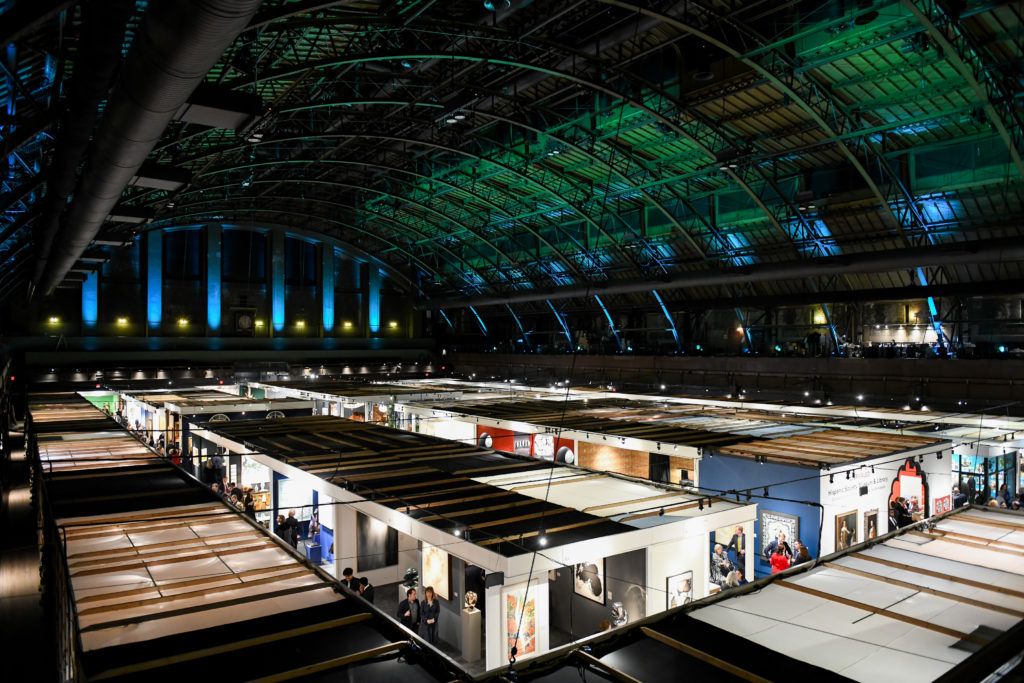

Artnet Gallery Network

Time to dust off the brooches and polish the silver—the winter antiques season is officially in full swing in New York. The New York Antique Ceramics Fair, the Antiques & Design Show, and—the grand dame of them all—the Winter Show all open in the Upper East Side this weekend. Now in its 66th year, the Winter Show is a connoisseur’s dream, bringing together 72 fine and decorative arts dealers who will present jewelry, art, antiques, and armor from throughout the ages and around the world.
And it’s for a good cause, too—proceeds from Winter Show ticket sales go to the East Side House Settlement, a community-based social services organization serving the Bronx and Northern Manhattan.
The show is a dizzying confluence of fascinating objects—and it can be a lot to take in. To get you started, we’ve picked nine artworks and objects worth seeking out.
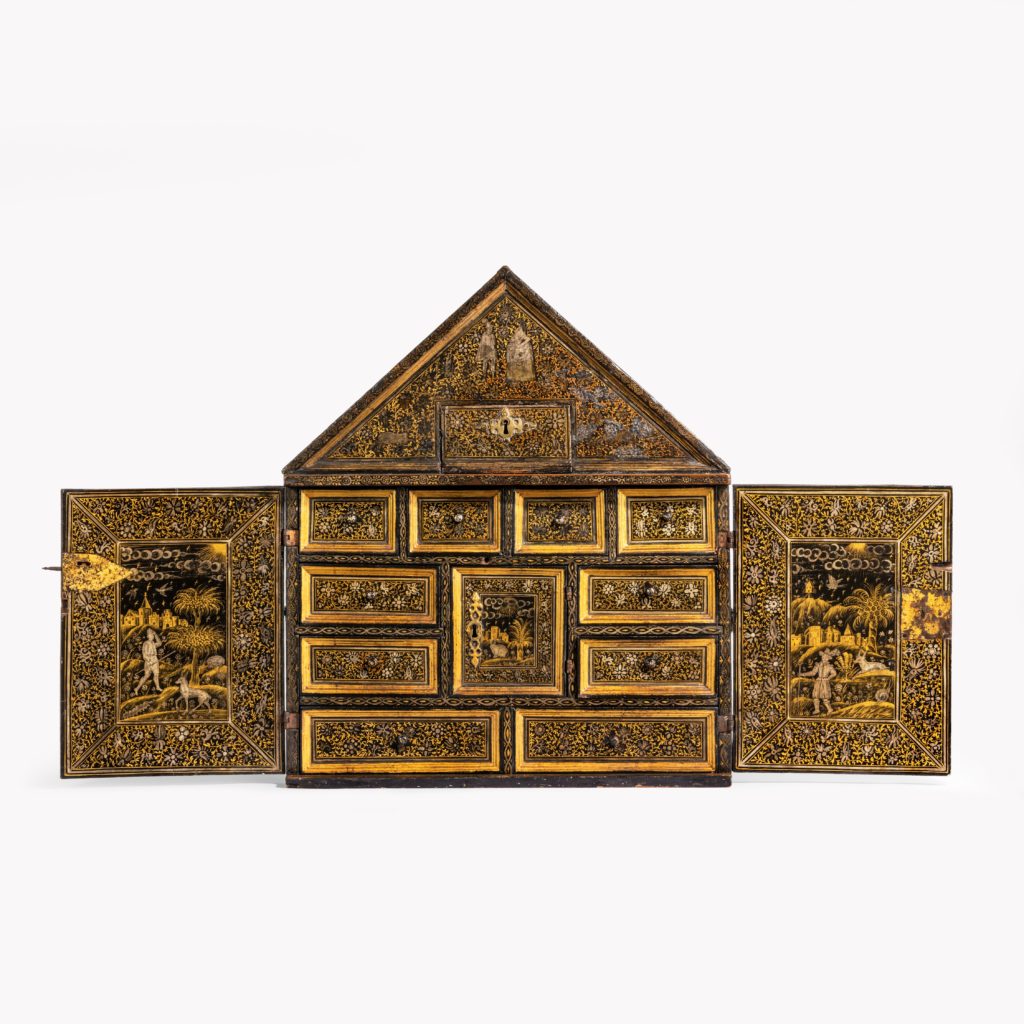
A rare English table cabinet (circa 1620). Courtesy of Wick Antiques.
With a unique triangular pediment (hiding a small central drawer) and ornate designs done in black and gilt paint, this 17th-century English cabinet is a marvel of detail. The two side doors open to reveal four short drawers and six longer drawers arranged around a central cupboard. The panels are intricately decorated with Dutch figures set in fortified towns and mountainous landscapes, all beneath a sky of stylized clouds. You’ll find another surprise when you open the drawers: the interiors are all painted red.
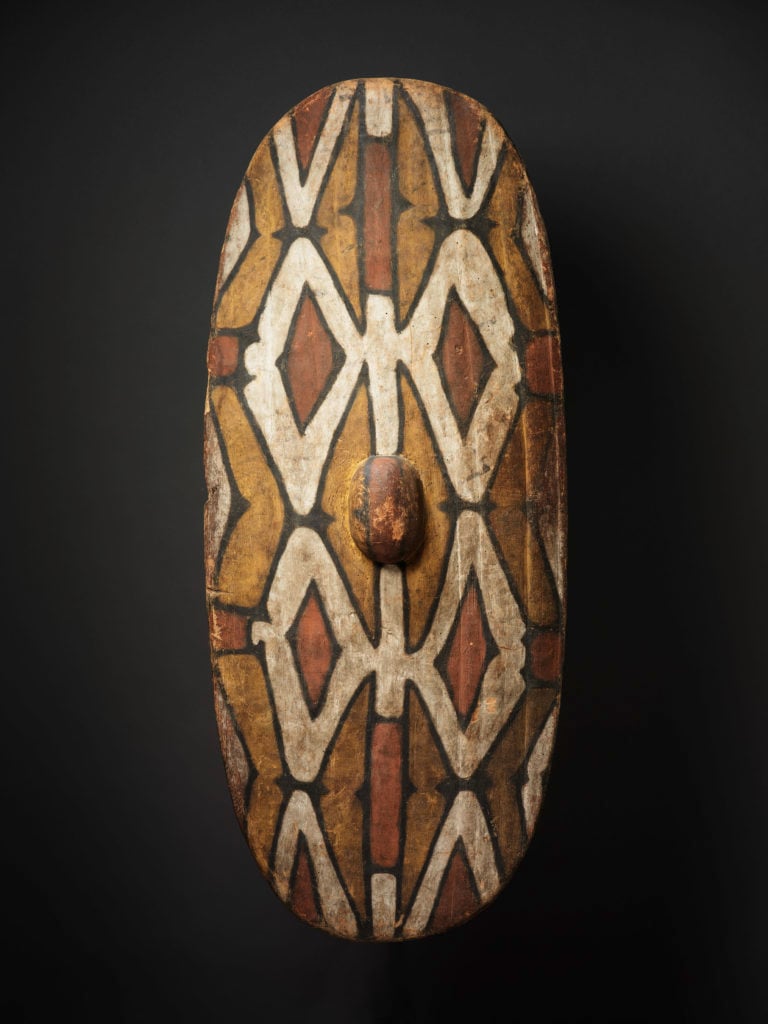
An important aboriginal Rainforest painted softwood shield North eastern Queensland, Australia, 19th century. Courtesy of Patrick & Ondine Mestdagh.
Aboriginal art and objects have been experiencing a surge of interest lately, with recent exhibitions devoted to the subject at Gagosian and Salon 94, as well as a closely watched auction of Aboriginal art at Sotheby’s in December. This almost 47-inch painted Aboriginal shield dates from the 19th century, comes from the rainforests of northeastern Queensland, and was first collected by a a British naval officer.
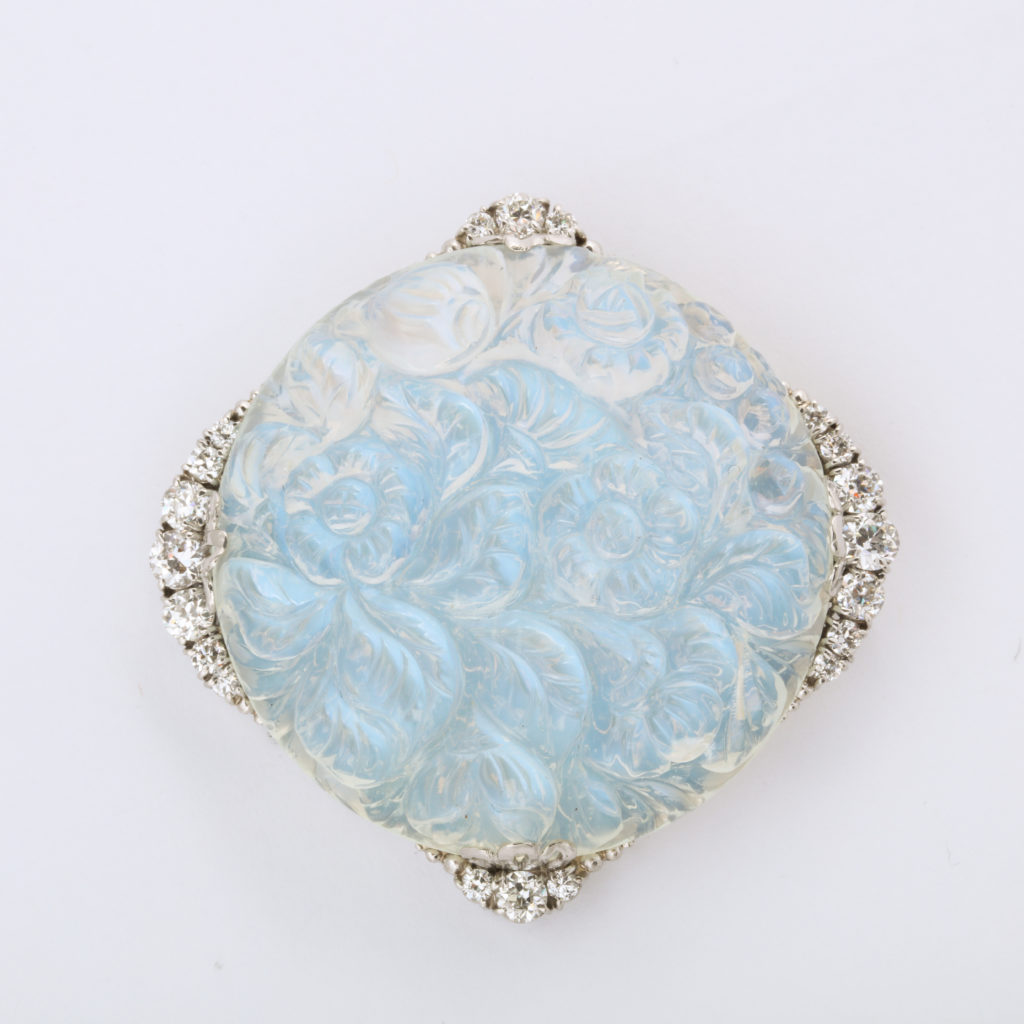
Tiffany & Co carved moonstone and diamond brooch set in platinum (circa 1905). Courtesy of A La Vieille Russie, Inc.
This moonstone and diamond brooch is exceedingly rare on several accounts. The stone itself is of exceptional size, measuring 1.75 inches in diameter. What’s more, the moonstone has been carved rather than set en cabochon (polished)—a very difficult skill.
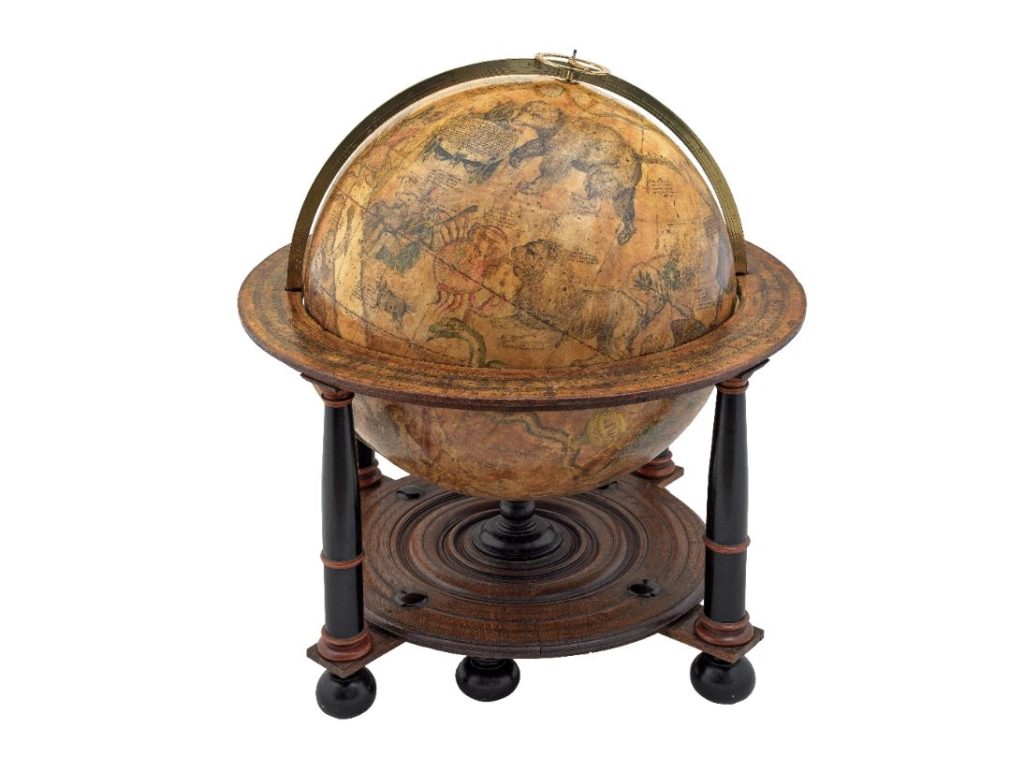
Willem Janszoon Blaeu, A pair of Globes (Terrestrial and Celestial) (1648). Courtesy of Daniel Crouch Rare Books.
These 26-inch diameter globes were the largest ever made when they were produced in 1648 and soon came to be regarded as the ultimate luxury objects by wealthy Dutch merchants of the day. The globes were both entirely functional and considered the most advanced cartographic document of the age. Today, the pair is an extraordinary record of the Age of Discovery, when over half of the world was being charted by Europeans for the first time.
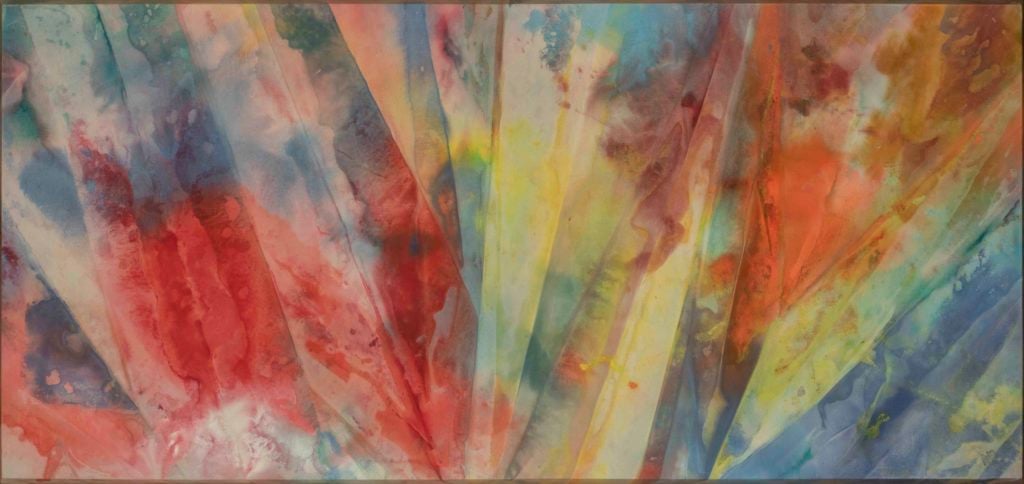
Sam Gilliam, Ray VI (1970). Courtesy of Gerald Peters Gallery.
Ray VI is one of a series of paintings that Gilliam produced in 1970. The title of the series refers to the “rays” of color that radiate from the lower register of the canvas in an upward sunbeam pattern. Made with custom stretchers, Ray VI is emblematic of the artist’s slice—or beveled-edge—technique, which involved basing the composition on the shape of the canvas. The approach was an important step in bringing painting out of two dimensions, a pursuit that would culminate years later in Gilliam’s famous “drape” paintings.
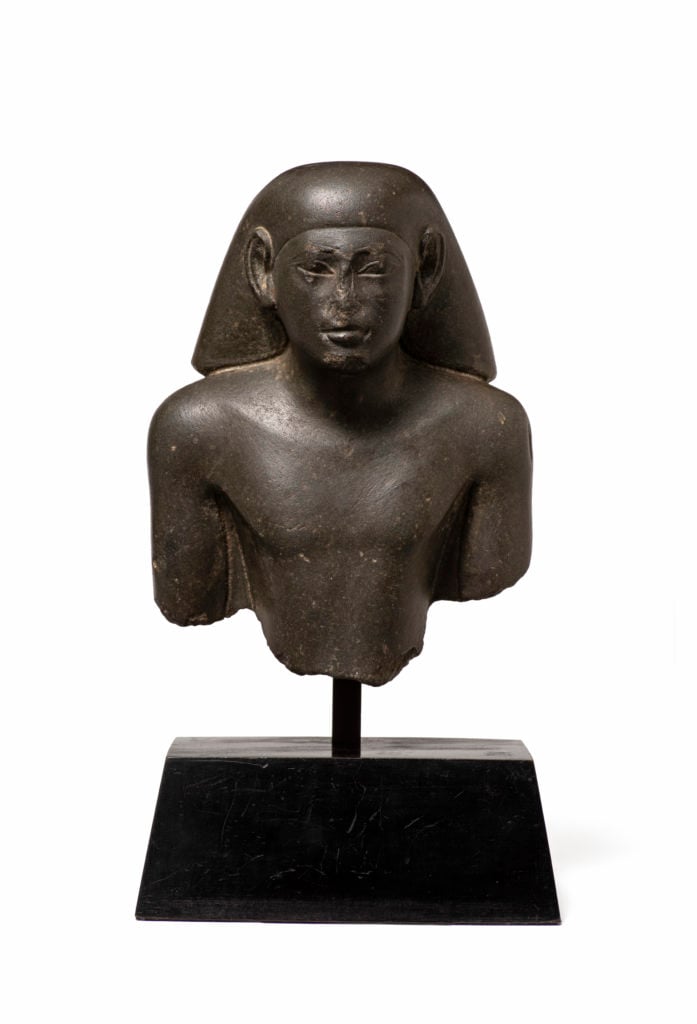
Egyptian green basalt bust of a seated nobleman or scribe, Late Dynastic Period, early 26th Dynasty, Reign of Psamtik I, c. 664–610 BC. Courtesy of Charles Ede.
This carved bust of a male figure embodies important political and artistic shifts of its age. During the reign of Psamtik I, when this sculpture was created, Egypt was heavily reliant on Greek troops—a complicated reality that led to a somewhat reactionary emphasis on Egyptian culture and history and a return to a classical style of art-making inspired by the 4th and 5th dynasties. But Egyptian tastes leaned more toward simple polished stone, as seen here, rather than the elaborate polychromy favored by the Greeks.
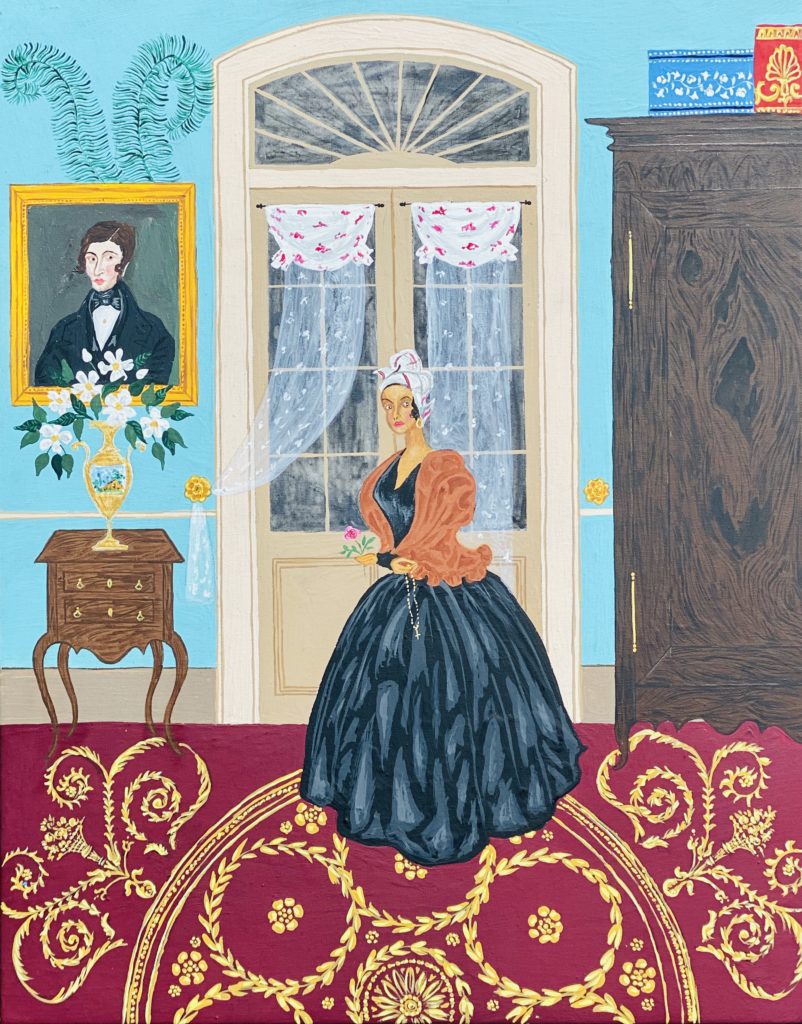
Andrew LaMar Hopkins, Voodoo Queen Marie Laveau in Her St. Ann Street Cottage (2019). Courtesy of Elle Shushan.
Self-taught contemporary artist Andrew LaMar Hopkins creates detailed paintings of imagined scenes of Antebellum New Orleans. The Creole artist often draws historical figures into his world, including the famed 19th century Voodoo queen Marie Laveau, who is pictured here holding a Louis Philippe rose in her Saint Ann Street cottage. Laveau was among the most famed practitioners of Voodoo, drawing thousands of both spectators when she performed rites on ceremonial occasions.
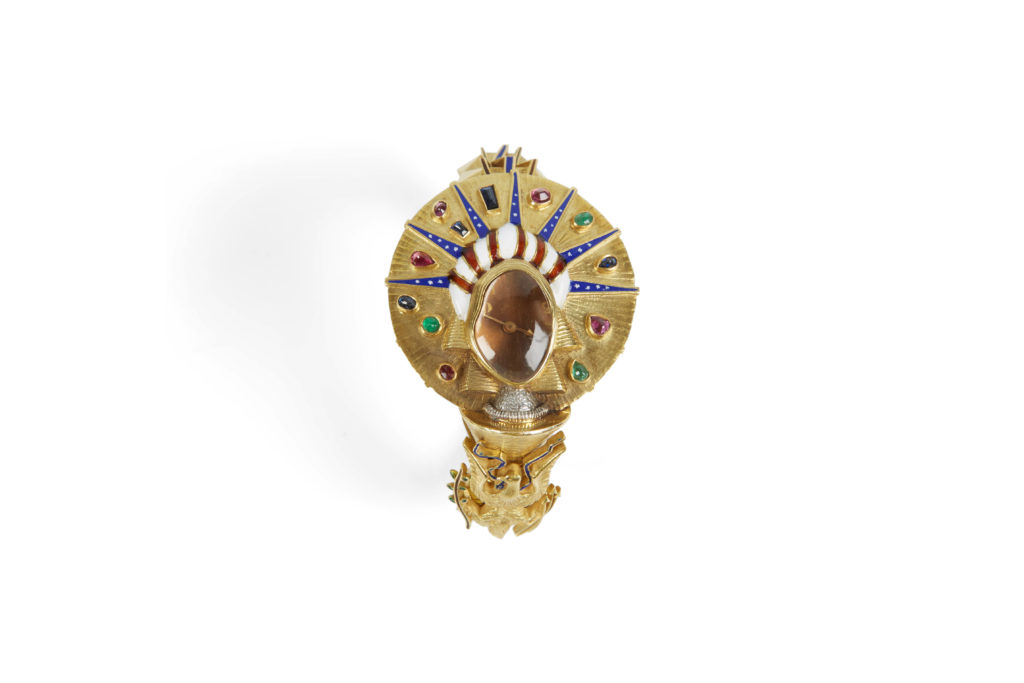
Salvador Dalí, 18-carat gold watch (1980). Courtesy of Didier Ltd.
Made by the Spanish Surrealist Salvador Dalí, this jewel-encrusted watch is a characteristically outlandish tribute to American freedom and democracy that combines design elements of the Great Seal and the Statue of Liberty in New York. The face of the watch features a red-and-white striped enamel crown from which emerge seven blue spikes decorated with white enamel stars as well as reverse-set rubies, emeralds, and sapphires. The embellishments don’t stop there: there is also an American bald eagle with wings outstretched on one side of the watch. The eagle holds a bundle of arrows in its left talon and an olive branch with green and purple enamel in its right, while blue-enameled ribbon flutters from its beak.
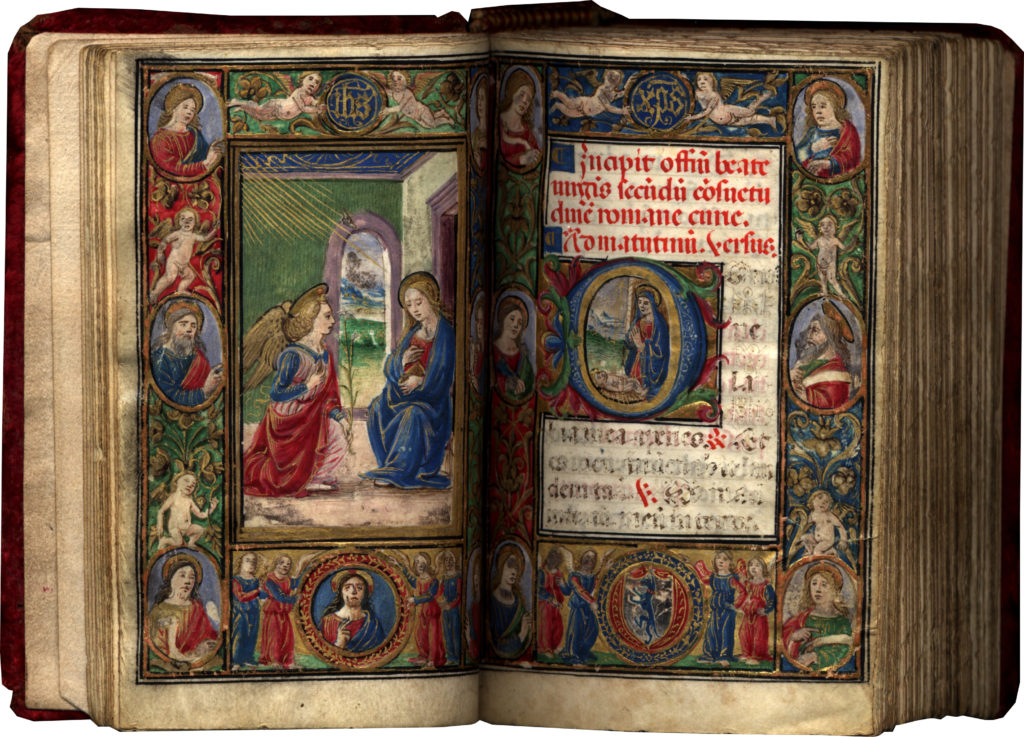
The Calcagni Hours (Use of Rome) in Latin, illuminated manuscript on parchment (circa 1508). Courtesy of Les Enluminures.
This sumptuous illuminated Book of Hours was created for a member of the Sienese Calcagni family from the workshop of Attavante degli Attavanti, one of the most celebrated illuminators of Renaissance Florence.
The Winter Show is open to the public through Sunday, February 2, 2020. Monday, Wednesday, and Friday from 12 p.m–8 p.m; Tuesday and Thursday from 12 p.m–4:30 p.m; Saturday from 12 p.m.–7 p.m.; Sunday from 12 p.m.–6 p.m.